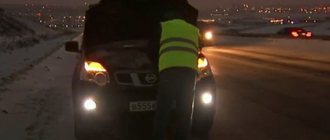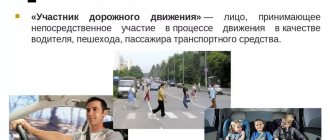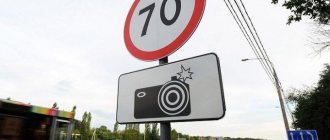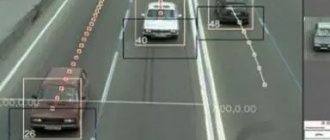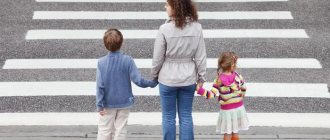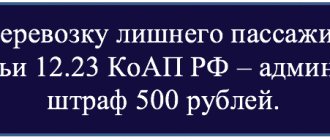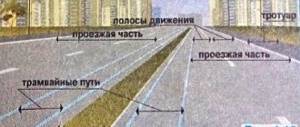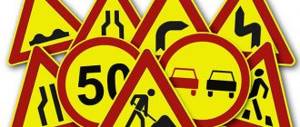“Over the past years, the number of road accidents has decreased by 11.8 percent, and social and transport risks have significantly decreased. At the same time, the level of motorization in the country has increased by more than one and a half times: now in many cities there are an average of 300 cars per thousand residents. It is clear that the number of cars will increase, and this is an objective challenge both for road users and for those responsible for organizing it,” the president emphasized the particular relevance of improving legislation in the field of road regulation today.
In pursuance of the instructions of the President of the Russian Federation, in August of this year an Action Plan was approved aimed at reducing the mortality rate of the population from road accidents.
It should be noted that increasing road safety today occurs exclusively in conditions of active interaction between government agencies and an active public. Only through dialogue is it possible to identify the most pressing problems and find the optimal way to solve them.
For the safety of life
Traffic regulation issues are regularly discussed in the Open Government format. Thus, as a result of the August meeting, Mikhail Abyzov, Minister of the Russian Federation for Open Government Issues, gave a number of instructions regarding improving the safety of children's passenger transportation. Among other things, he demanded to develop a certification procedure for child restraint devices and to prepare methodological materials to help parents choose a car seat. Also in October, the Open Government format discussed increasing penalties for drunk drivers.
In addition, traffic regulation was discussed within the framework of the sixth international congress “Road Safety for Life Safety”. The event, dedicated to the role of civil society in improving road safety, took place in September 2021 in St. Petersburg under the chairmanship of the Federation Council of the Russian Federation, the Interparliamentary Assembly of the CIS Member States and the Ministry of Internal Affairs of the Russian Federation. Within the framework of the congress, a broad discussion was organized on the issues of interaction between authorities and the public in the formation of road transport policy, as well as the development of specific measures for their implementation with the active participation of civil society institutions.
Against the background of heated discussion of the problem of safety of all road users, the relevant legislation is actively changing today. In 2021, changes have affected almost all aspects of “automotive life”, but that’s not all - other serious amendments will come into force in the near future.
“This year, it seems to me, has shown very well that public opinion influences the decisions of legislators. If we take, for example, initiatives with dangerous driving, then in fact this topic was discussed for a whole year, round tables were held with people who developed the formulations themselves in order to actually introduce the very concept of “Dangerous Driving” into the traffic rules, and then directly discuss responsibility for this is a violation. If we talk about today’s mechanism, it seems to me that this is one of the striking examples of how society has actively participated in this project, and I think it will be quite active in helping to identify and record violations. Because today a special application is being developed, on the basis of which a road user who has witnessed violations will be able to send information that he saw it - either in the form of a video message or a photo with comments to the State Traffic Inspectorate,” noted President of the expert Natalia Agre.
What has changed in 2021?
On September 1 (in Moscow - July 24), new evacuation rules began to apply. According to the innovations, drivers have the opportunity to pick up their car from the impound lot before paying an administrative fine. Tariffs will also be unified soon - currently the cost of evacuation in different regions is calculated differently. For example, in the capital it depends on the power of the car.
Also in the fall, new rules for taking exams in the traffic police came into force. Now at the theoretical stage it will be possible to make a mistake twice, but for each wrong answer, the examinee will be required to answer five additional questions on the same topic. The table of penalty points for the practical exam in urban conditions was slightly changed, two “on-site” exercises were added, and the inspector is now required to sit not in front next to the student.
Drivers were given the opportunity to pick up their car from the impound lot before paying an administrative fine. Tariffs will also be unified soon
“One of the important points was related to the regulations for taking exams. After all, over the past few years, driver training reform has been underway. It's no secret that young drivers very often get into traffic accidents. In fact, this procedure of “transferring” a student from a driving school to an exam has always raised many questions,” said Deputy Chief of the Main Directorate for Traffic Safety of the Ministry of Internal Affairs of Russia, Major General of Police Vladimir Kuzin. — And of course, there was such an expectation in society - how the State Traffic Inspectorate would react, what its contribution to improving the quality of education would be. And this year a new, more advanced regulation was adopted.
Also, as of today, amendments have been prepared to the restrictions on driving by young drivers, related to restrictions on towing, transporting passengers, etc. It seems to me that this strategic move will bring significant benefits over time.”
One of the most resonant topics of 2021 was the discussion of responsibility for “Dangerous Driving.” The need for such changes has become especially urgent recently. Thus, according to a VTsIOM survey, almost a third of respondents (31-39%) report the most serious and dangerous offenses on the road.
After high-profile scandals related to racing on the central streets of Moscow, in June of this year, through the efforts of the traffic police, deputies and the government, a new term “Dangerous driving” appeared in the traffic rules. Now, for changing lanes during heavy traffic, sudden braking, failure to maintain a distance and obstructing overtaking, drivers will be punished with a fine, the amount of which will be approved during the autumn session of the State Duma.
After the introduction of the norm, the initiative of officials was supported by an active public - as a result of a survey on the official website of the State Traffic Inspectorate, more than 40% of respondents were in favor of introducing the concept of “Dangerous Driving” into the traffic rules. However, judging by the fact that the main reason for such behavior on the roads seems to those surveyed to be “lack of personal culture and upbringing,” legislative measures will clearly not be enough to change the situation on the roads. Vladimir Putin also drew attention to this problem during a meeting of the State Council Presidium on road safety issues in Yaroslavl.
“It is clear that fostering such a culture is a long process, so it must go in parallel with increasing responsibility for violations. We see in practice that these are the measures that helped solve the problem with seat belts, for example; They were forced to install seats for children in cars, or, as experts say, restraint devices,” the president emphasized.
As part of the Sixth International Congress “Road Safety for Life Safety,” a number of thematic round tables were also held, at which increasing legal awareness in the field of road regulation was discussed particularly actively. Officials, together with experts and public organizations, discussed not only the necessary changes that should be made to the current legislation, but also ways to improve the driving culture of citizens.
“An important recent trend is the intensification of the activities of civil society institutions, which are providing increasingly tangible support to the state in matters of ensuring road safety. If a few years ago many social activists proposed popular but not well-developed topics, today they only bring up for discussion projects that have been studied from the point of view of statistics and sociology.
Just a few years ago, the topic of seat belts made people smile, and when asked if you wear a seat belt in a car, drivers just chuckled.
This certainly becomes a good working system. We actually see a change in society's attitude towards a number of violations. So, just a few years ago, the topic of a seat belt made people smile, and when asked whether you wear a seat belt in a car, drivers only chuckled. Today, the number of motorists who wear seat belts has reached more than 85%. This is a huge number. This just means that people are beginning to understand that the issue is not the fine they will pay, but their own safety,” says the head of the Russian State Traffic Inspectorate, Viktor Nilov.
These are just a few of the amendments that came into force this year. Much more serious changes await motorists in 2017. Among them are changes to the rules for transporting children and increased penalties for systematic violation of traffic rules.
More questions in the driving license rules
Those who decide to take their license this year will be in for a little surprise in the form of some innovations. Thus, the number of incorrect answers that a student can make is 2. The exam will be immediately suspended if the student does not provide an answer to most of the questions. The same story will happen if most of the answers are incorrect. The theoretical part has increased significantly. Future Category B drivers will need to give even more detailed answers. As for future motorcycle drivers, they will need to know and be able to demonstrate maneuvers at different speeds.
All tasks for the motorcycle will need to be completed within a certain period of time.
It is also important to take into account the new rules that appeared this year. It is also known that in 2021, students will even have to know the parking rules. This can also be checked.
Children - seats, adults - fines
One of the most significant amendments of 2021 will be a change in the rules for transporting children in cars. Thus, from January to October 2021 alone, 68 children were killed in road accidents and more than 1 thousand were injured, whose parents ignored or violated the rules for transporting small passengers. Today, some adults prefer cheap boosters and pads to a comfortable, expensive car seat. These devices do not take into account all the physiological characteristics of the child, and therefore do not provide the proper level of safety and, on the contrary, can sometimes even harm the little person.
Injury scale when using various types of child restraints in a car. Infographic: Expert
However, soon dangerous boosters and adapters will finally become a thing of the past - innovations exclude the possibility of using “other means that allow you to fasten a child using seat belts provided for by the design of the vehicle.” The changes oblige parents of children under 7 years old to abandon analogues and use exclusively car seats as a restraint device. For children from 7 to 11 years old, it is possible to fasten with regular seat belts, but only if, due to their physiological parameters, they no longer fit in a car seat and are sitting in the back.
“I view the changes as a big global news story for working with parents,” Agre said. — If we take 5-6 years ago, then 5% of the population had child restraints, and today this figure has risen to 65%. I am sincerely confident that now, with the adoption of these amendments, we will also organize a large educational program. At the same time, with the support of the Ministry of Health, work is underway to train young parents on the rules for transporting children. And it seems to me that the point is not in the amendments themselves, but in the fact that this is once again a reminder to parents that they need to transport their children in high-quality car seats.”
New traffic police fines
So let's talk about what we already know. In the new year, fines will be imposed or the fines will increase for the following violations:
- For the lack of compulsory motor liability insurance (but keep in mind, it is the lack of insurance as such, and not the inability to present the policy to the inspector; you don’t have to carry “paper” copies with you at all - they will check using the electronic database)
- Speeding (it has not yet been decided whether the “non-penalty threshold” will remain at 20 km/h, will drop to 10 km/h, or even be equal to zero; alas, in some countries there are such precedents)
- Using a telephone (not only without a headset, but in general; the driver is not yet prohibited from talking to a passenger in the front seat, but it seems that this is coming)
- Crossing railway crossings at a prohibiting signal (this was previously fined, but now the fine has been significantly increased and deprivation of rights is proposed)
- Not wearing a seat belt (video recording of the violation is sufficient to issue a fine)
- Winter tires in summer. It is unknown how to solve the issue with summer tires in winter. Previously, there were no fines for out-of-season tires, there were only for worn-out winter tires, but according to the Technical Regulations of the Customs Union, there is a ban on studded tires in the summer.
In addition, some new numbers are called:
- 8,000 rubles for driving into oncoming traffic - previously it was 5,000, but they could take away your license at the same time.
- 3000 rubles – no MTPL policy in the database, plus the car will be immediately driven to the impound lot.
- 1000-4000 rubles – violation of the established speed limit by more than 10-20 km/h.
- 8,000 rubles – driving without a driver’s license.
You can find the 2021 traffic police fines on the Internet (new table of fines) and compare the size of the sanctions last year and this year.
Repeat offenders will become pedestrians
The draft federal law, developed by the Russian Ministry of Internal Affairs, proposes to introduce punishment into the Administrative Code of the Russian Federation for persistent violators of traffic rules.
It is expected that next year, motorists who have been punished for violating traffic rules more than three times will be deprived of the right to drive vehicles for a period of one to one and a half years. Drivers who do not have a driving license at all are expected to be punished with a fine of 10 thousand rubles. The exception is administrative offenses recorded using photo and video cameras.
Among the violations for which drivers will be deprived of their license for a year or more are systematically exceeding the speed limit by 40 km/h or more, driving on a red light, driving into the oncoming lane, turning across a solid road, failure to give priority to pedestrians and other dangerous maneuvers.
The material was prepared within the framework of the Federal Target Program “Improving Road Safety in 2013-2020.”
